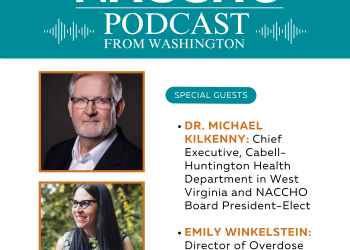What is preemption?
Preemption is when a higher body of government precludes a lower body of government from exercising authority over a certain topic.1 This can be explicitly stated in the law of the higher governmental body or implied through court decisions.2 Preemption can be used for good reasons, such as setting minimum standards for clean air and water, food safety standards and other measures related to health and safety. However, it can also be used to prevent local communities from enacting laws and policies that can improve public health and safety.1
States and localities have a variety of policy options to reduce tobacco use and health disparities and preemption can impact how they are implemented. Secondhand smoke exposure can be mitigated with smokefree indoor air laws and smokefree workplace policies.2 Youth access to tobacco products can be prevented by restricting access to tobacco vending machines and restricting the sale of tobacco products to minors.2 Other tobacco control measures include stricter licensing requirements for tobacco retailers and increasing taxes on tobacco products.2 These policies have been proven to reduce tobacco use and improve public health. However, the tobacco industry has been lobbying states to preempt local communities from enacting the policies previously mentioned.
For example, in 1994 the state of Tennessee passed a law that preempted cities and towns from adopting smokefree indoor air laws.3 This has contributed to Tennessee having over 11,000 tobacco-related illness deaths experienced each year and one of the highest smoking rates in the U.S.3 In 2022, this law was partially repealed in age restricted venues, meaning for the first-time localities in Tennessee could address the issue of secondhand smoke exposure.3
As of late September 2022, 12 states have laws or court decisions that preempt localities from enacting laws or policies that restrict smoking in public places, which includes worksites, government buildings, restaurants and bars, and other public places.2 As a result, the population of these states have higher risk of exposure to secondhand smoke.
25 states have laws preempting local ordinances that address youth access.2 This includes preempting localities from restricting the sale and distribution of tobacco products to youth, and preempt local ordinances related to tobacco vending machines. 16 states preempt localities from passing ordinances related to the licensure of tobacco products, which includes over-the-counter and vending machine tobacco sales.2 These preempted policy areas lead to increased youth access to tobacco products and thus higher rates of youth initiation.
What can LHDs do?
Addressing preemption is important for local health departments because preemption can prevent local health department staff from being able to take action to address tobacco control and prevention. States with preemption are more likely to experience secondhand smoke exposure and increased rates of youth initiation.
While preemption limits the abilities of local health departments and communities to enact policies that prevent tobacco use, there still are actions local health departments and communities can take that work around this preemption, and even reverse it. These actions are based heavily on community education and gradual building of support for the removal of preemption. Below are some examples of state and local health departments working on addressing preemption in the field.
Indiana Preemption navigation: The Indiana Department of Health’s Tobacco Prevention and Cessation Division along with Tobacco Free Allen County have worked around Indiana’s preemption of local communities enacting restrictions on the sale, display, and distribution of tobacco products by conducting a community-based survey of tobacco retailers and educating the community on the results of this survey.4 Community presentations were conducted which included pediatricians, school administrators, parents, and other community members to raise awareness on the issues of tobacco and promote action to elected officials.4 To learn more about how this was done, please see Counter Tools Webinar on the Effects of Preemption.
Colorado Preemption reversal: The state of Colorado had preempted localities from imposing taxes, fees, and licenses to tobacco retailers, which impacted localities abilities to address youth tobacco use.5 A stakeholder group led by the Colorado state tobacco control program developed four recommendations to Colorado to reduce Colorado youth tobacco initiation, one of which was to remove this preemption.5 Local health departments educated community leaders on how this preemption impacted youth access to tobacco products, and gradually built support for the removal of this preemption throughout several years.5 To learn more about how they achieved this, please see Counter Tools Webinar on Reversing Preemption: A Colorado Case Study
Local health departments also have access to multiple resources that can provide them guidance on how to address preemption.
The Tobacco Control Network and Public Health Law Center developed a three-part webinar series on preemption in the tobacco control and prevention field.6 This webinar series provides an in-depth background on preemption, how it impacts tobacco control and prevention efforts by state and local health departments, how the tobacco industry pushes preemption legislation, and how state and local health departments can make progress even when preemption is in effect.6
First Webinar: Why State Preemption and Local Authority Matter
Second Webinar: Tobacco Industry Tactics for Passing Preemption Legislation
Third Webinar: Moving Forward When Tobacco Preemption is in Effect
ChangeLab Solutions and Counter Tools developed a playbook on preemption at the point-of-sale.7 This provides background on the different types of preemption and how it affects tobacco control, a thorough assessment of local authority on point-of-sale tobacco policies, how to make progress while under preemption, and how to organize to prevent preemption from taking effect and displays legal pathways for reversing preemption.7 This resource focuses on preemption at the point-of-sale but has information that can be applied to preemption in other tobacco policy areas, such as smokefree indoor air laws. Tobacco Point-of-Sale Preemption Playbook
Additional Resources
ChangeLab Solutions Preemption Resources
Public Health Law Center Preemption Resources
NACCHO’s Tobacco Policy Statement
References
1 Mowery, P. D., Babb, S., Hobart, R., Tworek, C., & MacNeil, A. (2012). The impact of state preemption of local smoking restrictions on public health protections and changes in social norms. Journal of Environmental and Public Health, 2012, 1–8. https://doi.org/10.1155/2012/632629
2 Centers for Disease Control and Prevention. (2022, February 14). State system preemption fact sheet. Centers for Disease Control and Prevention. Retrieved January 31, 2023, from https://www.cdc.gov/statesystem/factsheets/preemption/Preemption.html
3American Nonsmokers’ Rights Foundation. (2022, December 15). Tennessee. Bridging the Gap. Retrieved January 31, 2023, from https://smokefreegaps.org/gaps-tennessee/
4 Counter Tools. (2022, May 3). Healthy Pos Webinar series: The effects of preemption and opportunities for action in preempted states. Counter Tools. Retrieved January 31, 2023, from https://countertools.org/blog/healthy-pos-webinar-series-the-effects-of-preemption-and-opportunities-for-action-in-preempted-states/
5 Counter Tobacco. (2019, March 15). Reversing preemption: A colorado case study. Counter Tobacco. Retrieved January 31, 2023, from https://countertobacco.org/reversing-preemption-a-colorado-case-study/
6Public Health Law Center. (n.d.). Public Health Law Center. Local Authority and Preemption | Public Health Law Center. Retrieved January 31, 2023, from https://www.publichealthlawcenter.org/topics/commercial-tobacco-control/local-authority
7ChangeLab Solutions. (n.d.). Tobacco point of sale preemption playbook. ChangeLab Solutions. Retrieved January 31, 2023, from https://www.changelabsolutions.org/product/tobacco-point-sale-preemption-playbook


